Israel began using Iron Sting guided mortar mines
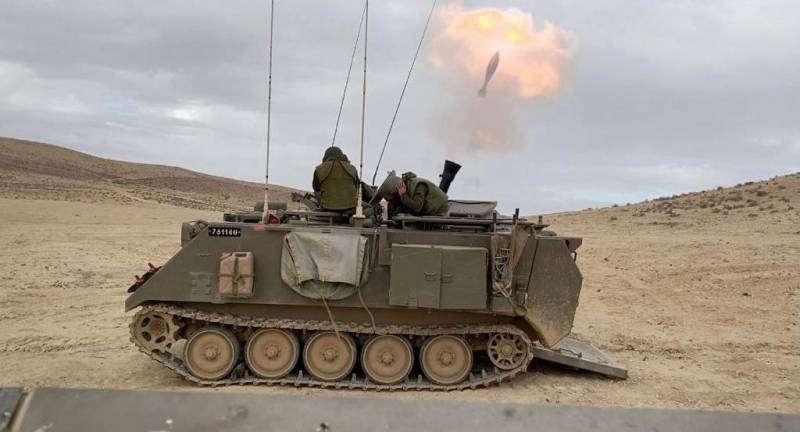
Self-propelled mortar CARDOM fires Iron Sting mine during exercises
As part of the ongoing military operation against the militant wing of the Hamas movement, the Israeli armed forces are using a wide range of different types of weapons, including the newest samples. Thus, a few days ago they announced the first use of the Iron Sting 120-mm guided mortar mine. This product entered service in the recent past and until now could only show its potential and characteristics in test conditions.
Perspective development
For many years, the Israeli company Israel Military Industries / IMI Systems has been developing guided rounds for mortars. In 2018, it became part of Elbit Systems as a division responsible for land systems. The reformed Elbit Systems Land continued the development of mortar mines and brought several examples of this kind to the market.
Among other projects, since the beginning of the tenth years, IMI / Elbit has been developing the Iron Sting guided mine. The goal of this project was to create a 120 mm mortar ammunition with an improved control system. Unlike other similar ammunition, the “Sting” was supposed to receive three guidance systems at once, operating on different principles.
Creating a compact and lightweight combined guidance system that can withstand all loads turned out to be quite a difficult task and took several years. Only towards the end of the XNUMXs the mine was submitted for testing, which again took a lot of time.
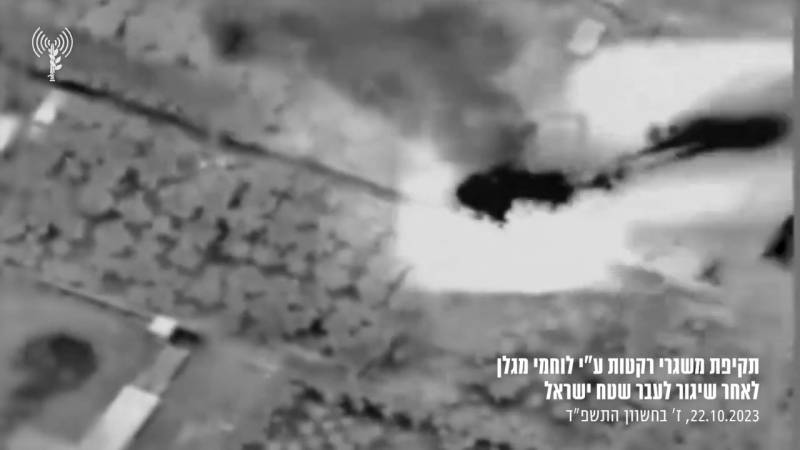
Hamas MLRS detected by Israeli reconnaissance UAV
The tests continued until the beginning of 2021 and were completed successfully. Based on their results, the Israel Defense Forces adopted the Iron Sting mine for service. Serial production was launched and the process of integrating ammunition into the troops began. It was reported that it would be used by battalion-level 120mm mortars. Due to such a mine, it was planned to give them new combat capabilities, which had previously been provided only by missile systems.
Details of the production and supply of the Iron Sting, for obvious reasons, were not reported. However, it is known that in 2021-23. The IDF received several batches of new mines, mastered them and distributed them among units equipped with Keshet self-propelled mortar systems (Soltam CARDOM).
The Iron Sting mine and other similar developments are regularly shown at foreign military-technical exhibitions in order to attract potential buyers. As far as we know, such ammunition has not yet found its customer abroad. Possibly the last news will become advertising and will help Elbit Systems promote the “Sting”.
First application
According to known data, since their adoption in 2021, Iron Sting mines have been regularly used as part of various training activities. Despite the difficult situation in the region, there was no reason for real combat use. However, not long ago the situation changed.
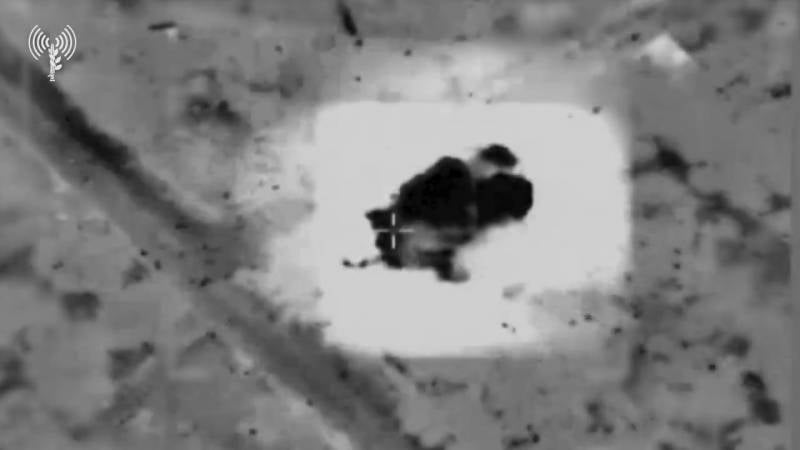
Mine explosion and target destruction
On October 22, the IDF press service announced the start of the use of new guided mines. Special forces unit No. 212 "Maglan" is participating in Operation Iron Swords. Its task is to identify and defeat enemy targets and weapons in the Gaza Strip and on the border with Lebanon.
In recent days, combatant 120-mm mortars with Iron Sting-type rounds have been used to fire at some of the identified targets. At the time of the official report, the unit had expended at least 10 such mines. It was alleged that a significant amount of enemy weapons and ammunition, at least a hundred militants, etc. were destroyed. Due to this, it was possible to prevent further shelling and border crossings.
Attached to the press release was a short video filmed by a reconnaissance drone. First, the ground launcher of the multiple launch rocket system and the shells taking off from it were captured in the frame. Then they showed the moment the controlled mine fell and exploded. Judging by the flash, the ammunition actually hit the launcher or field ammunition depot.
Apparently, not only the Maglan unit has Iron Sting mines, and they can also use them in battles. It cannot be ruled out that guided munitions are already being actively used, and the IDF will talk about this again in the near future. At the same time, as the first time, they will bravoly report on the successful and accurate defeat of all intended targets.
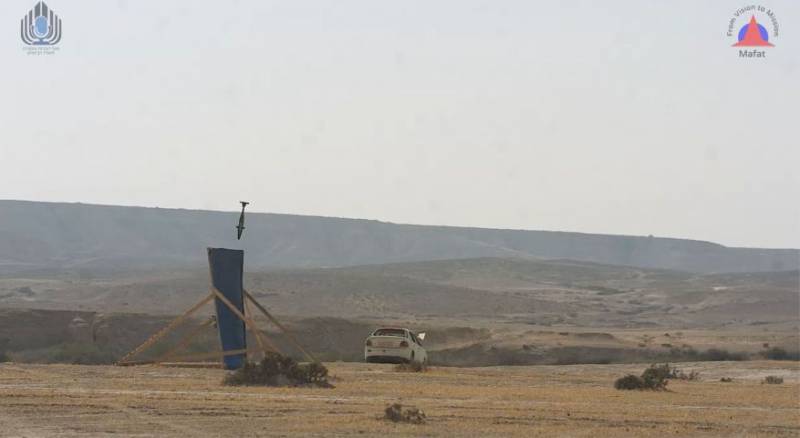
Target hit during testing, 2021
Three guidance systems
The goal of the Iron Sting project was to create a promising guided munition with improved combat qualities for existing 120-mm mortar systems. The problem of increasing the accuracy and power of ammunition was solved through the simultaneous use of different guidance systems and a multi-mode fuse. As a result, in its design and appearance, the “Iron Sting” is noticeably different from other mines, incl. guided munitions from IMI/Elbit.
The Iron Sting mine is made in an elongated torpedo-shaped body of the maximum possible volume with a shortened shank. In the center of the body there are deployable rudders, and in the tail there is a stabilizer of a similar design. Control devices are located in the head and central parts of the body; the remaining volumes are given over to the bursting charge. The tubular shank accommodates the propellant charge, and additional charges can also be installed. The total length of the mine is 950 mm, weight – 10,8 kg.
The ammunition is equipped with a combined control system. It includes satellite and inertial navigation devices, a semi-active laser homing head and an autopilot that generates commands for the rudders. There are three modes of operation of the equipment: coordinate guidance using satellite and inertial systems, a combination of INS and laser seeker, as well as the simultaneous use of all devices.
To use such a mine, some additional devices are required. Thus, the target coordinates are entered using a standardized programmer included in various mortar systems, such as CARDOM. It takes 15 seconds to prepare the ammunition for firing. When using a semi-active seeker, the assistance of a gunner with a laser rangefinder-target designator is required. In search mode for a laser-illuminated target, Iron Sting shows a CEP of no more than 1 m. Navigation systems give a CEP of up to 10 m.
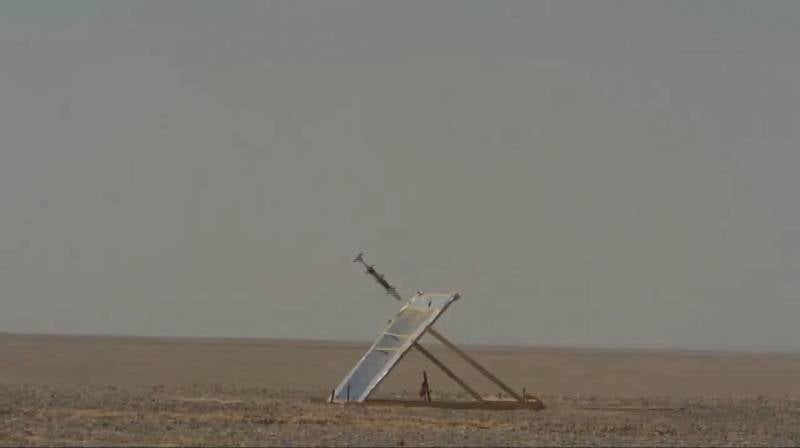
Demonstration of mine accuracy during testing
The high-explosive fragmentation warhead of the mine is detonated at the command of a three-mode fuse. It fires upon contact with a target, with a set delay or at a set height above the surface.
It is reported that the guided “Sting” is compatible with all 120-mm mortars of NATO standards. At the same time, the mine is primarily intended for the CARDOM complex and is compatible with its standard fire control system and programmer. Other mortars must be additionally equipped with appropriate devices.
Current direction
One of the main ways of developing artillery, incl. mortar, and increasing its combat qualities in recent decades is the development of adjustable and guided ammunition. All countries that have their own ammunition industry are trying to create such products and bring them into service. Israel is no exception - in recent decades, its industry has developed a lot of different guided missiles.
Modern guided munitions are generally similar to each other and are based on common solutions. However, there are interesting exceptions. An example of this is the Israeli product Iron Sting. To improve key characteristics, it was equipped with several guidance systems and a multi-mode fuse. The resulting 120-mm mine successfully passed tests and entered service. Now it is being tested as part of a real military operation, and so far only positive feedback has been received.
Information